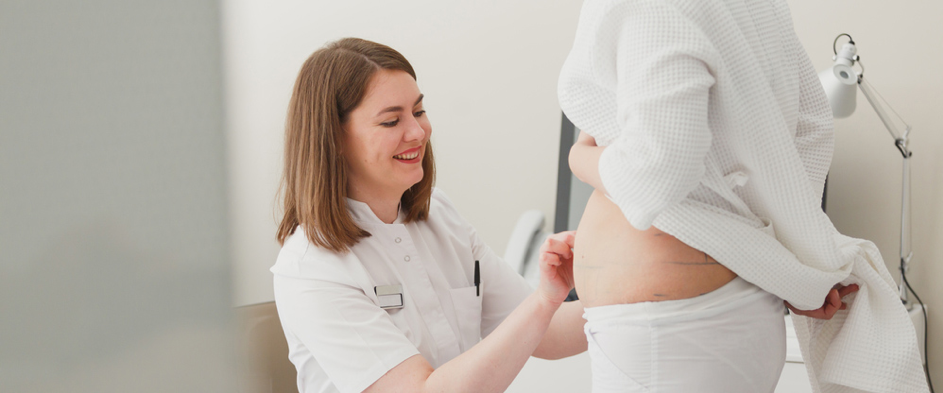MAXIMIZE YOUR HEALTH, IDEALIZE YOUR APPEARANCE!
A tummy tuck, or abdominoplasty, removes excess fat and skin, and in most cases restores weakened or separated muscles creating an abdominal profile that is smoother and firmer. A flat and well-toned abdomen is something many of us strive for through exercise and weight control. Sometimes these methods cannot achieve our goals.
Even individuals of otherwise normal body weight and proportion can develop an abdomen that protrudes or is loose and sagging. The most common causes of this include:
- Pregnancy
- Aging
- Significant fluctuations in weight
- Heredity
- Prior surgery
Tummy tuck surgery is a highly individualized procedure and you should do it for yourself, not to fulfill someone else's desires or to try to fit any sort of ideal image.
Abdominoplasty is a good option for you if:
- You are physically healthy and at a stable weight
- You have realistic expectations
- You do not smoke
Although the results of an abdominoplasty procedure are technically permanent, the positive outcome can be greatly diminished by significant fluctuations in your weight. For this reason, individuals who are planning substantial weight loss or women who may be considering future pregnancies may be advised to postpone abdominoplasty surgery.
What you should not expect from a tummy tuck:
Tummy tucks are not a substitute for weight loss or an appropriate exercise program. Also, tummy tuck operations cannot correct stretch marks, although these may be removed or somewhat improved if they are located on the areas of excess skin that will be excised, generally the treated areas below the belly button.
What are the steps of Tummy Tuck procedure?

What happens during Tummy Tuck surgery?
Step 1 – Anesthesia
Medications are administered for your comfort during abdominoplasty surgery. The choices include intravenous sedation and general anesthesia. Your doctor will recommend the best choice for you.
Step 2 – The incision
A full tummy tuck procedure requires a horizontally-oriented incision in the area between the pubic hairline and navel. The shape and length of the incision will be determined by the degree of correction necessary.
Through this incision, weakened abdominal muscles are repaired and sutured while excess fat, tissue and skin is removed.
A second incision around the navel may be necessary to remove excess skin in the upper abdomen.
Step 3 – Closing the incisions
Sutures, skin adhesives, tapes or clips close the skin incisions.
Results
Your abdominoplasty procedure will result in a flatter, firmer abdominal contour that is more proportionate with your body type and weight.
The final results may be initially obscured by swelling and your inability to stand fully upright until internal healing is complete.
Within a week or two, you should be standing tall and confident about your new slimmer profile.
Recovery
Following your surgery, dressings or bandages may be applied to your incisions, and you may be wrapped in an elastic bandage or a compression garment to minimize swelling and to support your abdomen as it heals.
A small, thin tube may be temporarily placed under the skin to drain any excess blood or fluid that may collect to minimize swelling after tummy tuck surgery.

